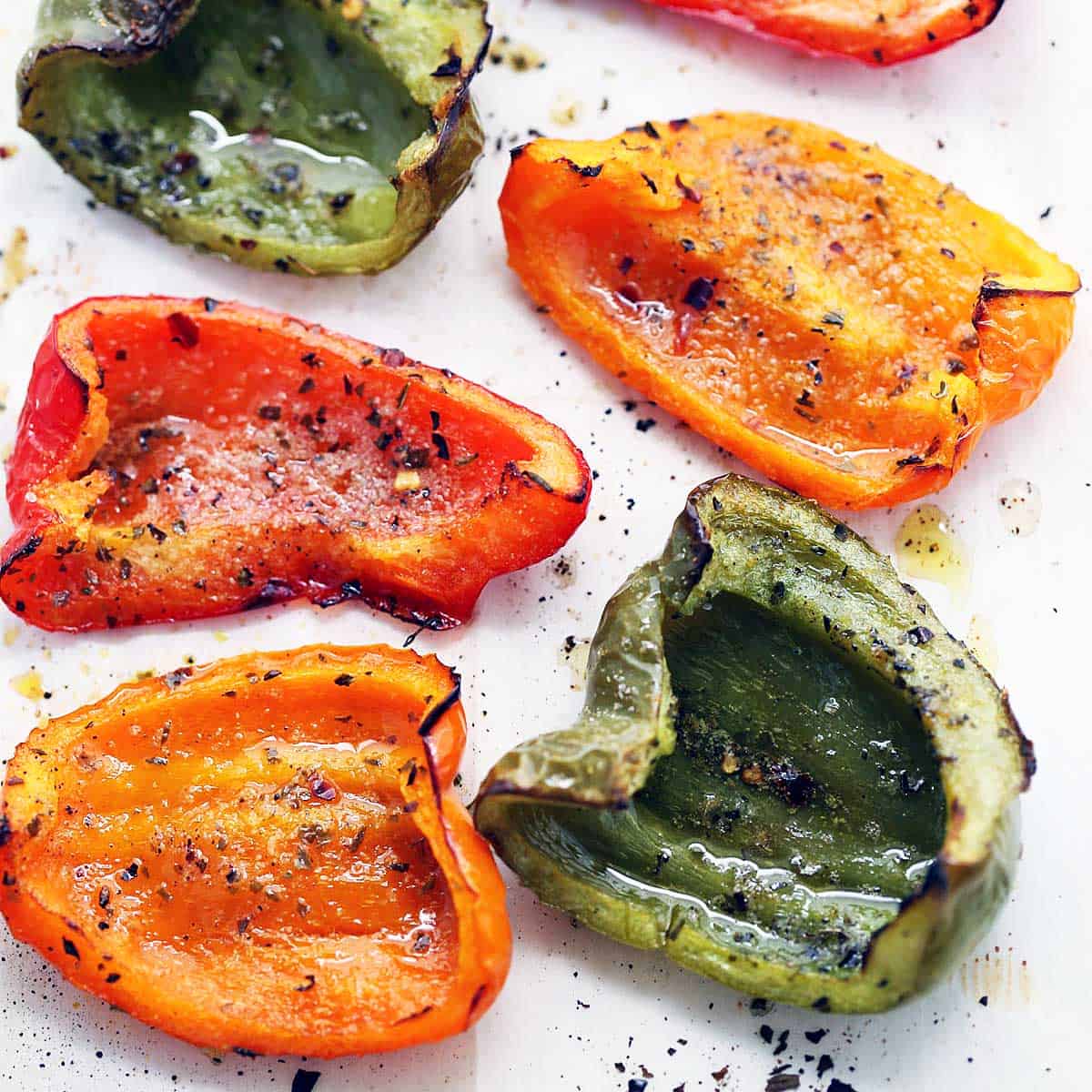You are using an out of date browser. It may not display this or other websites correctly.
You should upgrade or use an alternative browser.
You should upgrade or use an alternative browser.
What’s the goat vegetable???
- Thread starter Harry Sax
- Start date
More options
Who Replied?Stephan Hawking


ThrobbingHood
“I’m Sorry for 2025”
Stephen Hawking.
Edit: god damn it, someone got there before me.
Edit: god damn it, someone got there before me.
I love broccoli 
The Tomato’s is a fruit
But you know what they say. Knowledge is knowing that a tomato is a fruit. Wisdom is knowing not to put it in a fruit salad.
Yeah, obviously tomato can be considered a fruit as well as a vegetable, but when you get into the science it gets goofy.

Like, did you know that broccoli, cauliflower, cabbage, Brussel spouts, kale, and collared greens all come from the same plant?


Brassica oleracea - Wikipedia
Brassica oleracea is a plant species that includes many common cultivars, such as cabbage, broccoli, cauliflower, kale, Brussels sprouts, collard greens, Savoy cabbage, kohlrabi, and gai lan.
In its uncultivated form, it is called wild cabbage and is native to coastal southern and western Europe. A hardy plant in its uncultivated form, its high tolerance for salt and lime, and its intolerance of competition from other plants, typically restrict its natural occurrence to limestone sea cliffs, like the chalk cliffs on both sides of the English Channel, and the windswept coast on the western side of the Isle of Wight. Genetic analysis of nine wild populations on the French Atlantic coast indicated their common feral origin, deriving from domesticated plants escaped from fields and gardens.
The cultivars of B. oleracea are grouped by developmental form into seven major cultivar groups, of which the Acephala ("non-heading") group remains most like the natural wild cabbage in appearance:
- Brassica oleracea Acephala group – kale
- Brassica oleracea Viridis group – collard greens
- Brassica oleracea Alboglabra group – kai-lan (Chinese broccoli)
- Brassica oleracea Botrytis group – cauliflower, Romanesco broccoli, and broccoflower
- Brassica oleracea Capitata group – cabbage
- Brassica oleracea Gemmifera group – Brussels sprouts
- Brassica oleracea Gongylodes group – kohlrabi
- Brassica oleracea Italica group – broccoli
History
With the advent of agriculture and the domestication of wild crop plants, the people of the northern Mediterranean began cultivating wild cabbage. Through artificial selection for various phenotype traits, the emergence of variations of the plant with drastic differences in looks took only a few thousand years. Preference for leaves, terminal bud, lateral bud, stem, and inflorescence resulted in selection of varieties of wild cabbage into the many forms known today.
Impact of preference
- The preference for the eating of the leaves led to the selection of plants with larger leaves being harvested and their seeds planted for the next growth. Around the fifth century BC, the formation of what is now known as kale had developed.
- Preference led to further artificial selection of kale plants with more tightly bunched leaves, or terminal bud. Somewhere around the first century AD emerged the phenotype variation of B. oleracea known as cabbage.
- Phenotype selection preferences in Germany resulted in a new variation from the kale cultivar. By selecting for fatter stems, the variant plant known as kohlrabi emerged around the first century AD.
- European preference emerged for eating immature buds, selection for inflorescence. Early records in 15th century AD, indicate that early cauliflower and broccoli heading types were found throughout southern Italy and Sicily, although these types may not have been resolved into distinct cultivars until about 100 years later.
- Further selection in Belgium in lateral bud led to Brussels sprouts in the 18th century.
Yeah shyt like this is super interesting . Just like when folks like to start on their GMO’s are bad, not knowing that humans have basically always cultivated things and tried to bend nature to our will.Yeah, obviously tomato can be considered a fruit as well as a vegetable, but when you get into the science it gets goofy.
Like, did you know that broccoli, cauliflower, cabbage, Brussel spouts, kale, and collared greens all come from the same plant?

Brassica oleracea - Wikipedia
en.wikipedia.org
Brassica oleracea is a plant species that includes many common cultivars, such as cabbage, broccoli, cauliflower, kale, Brussels sprouts, collard greens, Savoy cabbage, kohlrabi, and gai lan.
In its uncultivated form, it is called wild cabbage and is native to coastal southern and western Europe. A hardy plant in its uncultivated form, its high tolerance for salt and lime, and its intolerance of competition from other plants, typically restrict its natural occurrence to limestone sea cliffs, like the chalk cliffs on both sides of the English Channel, and the windswept coast on the western side of the Isle of Wight. Genetic analysis of nine wild populations on the French Atlantic coast indicated their common feral origin, deriving from domesticated plants escaped from fields and gardens.
The cultivars of B. oleracea are grouped by developmental form into seven major cultivar groups, of which the Acephala ("non-heading") group remains most like the natural wild cabbage in appearance:
In places such as the Channel Islands and Canary Islands, where the frost is minimal and plants are thus freed from seasonality, some cultivars, known as Jersey cabbages, can grow up to 3 metres (9.8 ft) tall. These "tree cabbages" yield fresh leaves throughout the year, are perennial, and do not need to be destroyed at harvest as with a normal cabbage. Their woody stalks are sometimes dried and made into walking sticks.
- Brassica oleracea Acephala group – kale
- Brassica oleracea Viridis group – collard greens
- Brassica oleracea Alboglabra group – kai-lan (Chinese broccoli)
- Brassica oleracea Botrytis group – cauliflower, Romanesco broccoli, and broccoflower
- Brassica oleracea Capitata group – cabbage
- Brassica oleracea Gemmifera group – Brussels sprouts
- Brassica oleracea Gongylodes group – kohlrabi
- Brassica oleracea Italica group – broccoli
History
With the advent of agriculture and the domestication of wild crop plants, the people of the northern Mediterranean began cultivating wild cabbage. Through artificial selection for various phenotype traits, the emergence of variations of the plant with drastic differences in looks took only a few thousand years. Preference for leaves, terminal bud, lateral bud, stem, and inflorescence resulted in selection of varieties of wild cabbage into the many forms known today.
Impact of preference
- The preference for the eating of the leaves led to the selection of plants with larger leaves being harvested and their seeds planted for the next growth. Around the fifth century BC, the formation of what is now known as kale had developed.
- Preference led to further artificial selection of kale plants with more tightly bunched leaves, or terminal bud. Somewhere around the first century AD emerged the phenotype variation of B. oleracea known as cabbage.
- Phenotype selection preferences in Germany resulted in a new variation from the kale cultivar. By selecting for fatter stems, the variant plant known as kohlrabi emerged around the first century AD.
- European preference emerged for eating immature buds, selection for inflorescence. Early records in 15th century AD, indicate that early cauliflower and broccoli heading types were found throughout southern Italy and Sicily, although these types may not have been resolved into distinct cultivars until about 100 years later.
- Further selection in Belgium in lateral bud led to Brussels sprouts in the 18th century.

Here Are 8 Pictures Of Fruit And Vegetables Before They Were Domesticated By Humans And After
Lately, there's been quite a big movement against genetically modified foods (GMOs). And while the process of genetically modifying certain food is rather recent, humans have been playing around with the genetics for centuries.
Yeah shyt like this is super interesting . Just like when folks like to start on their GMO’s are bad, not knowing that humans have basically always cultivated things and tried to bend nature to our will.

Here Are 8 Pictures Of Fruit And Vegetables Before They Were Domesticated By Humans And After
Lately, there's been quite a big movement against genetically modified foods (GMOs). And while the process of genetically modifying certain food is rather recent, humans have been playing around with the genetics for centuries.www.boredpanda.com
I actually see GMOs as quite different from cultivars.
The biggest issues with GMOs are:
#1. Rich companies patent GMOs and use them to dominate the market, putting regular farmers in debt to them permanently. With regular crops you can just grow your own shyt off the previous year's seeds, but with GMOs if you do that you get sued.
#2. Cultivars were specifically adapted to every unique area, so that each culture and region grew shyt that was best suited to them. Whereas GMOs are centrally mass-produced and there's huge pressure to only use whatever the main GMO is at a given moment.
#3. A lot of GMOs have bad consequences that fukk up biodiversity, likely introducing pesticide genes into the environment or encouraging huge monocultures rather than mixed landscapes.
There's a lot more to it than that. But I agree that it's more nuanced than the "changing genes is bad" narrative.
Avisible Man
S/N: 52093850
Stuffed Artichokes and artichoke hearts
/__opt__aboutcom__coeus__resources__content_migration__simply_recipes__uploads__2007__04__HT-Cook-Artichokes-LEAD-1-28aa75bb321e4c78b6beda2c604a56de.jpg)
Roasted peppers

Lentils are great for u. Excellent source of protein and fiber.

Fava beans when they in the Portuguese soup with linguica

Tomatoes and eggplant, while they are actually berries, are culinarily vegetables.
/__opt__aboutcom__coeus__resources__content_migration__simply_recipes__uploads__2007__04__HT-Cook-Artichokes-LEAD-1-28aa75bb321e4c78b6beda2c604a56de.jpg)
Roasted peppers

Lentils are great for u. Excellent source of protein and fiber.

Fava beans when they in the Portuguese soup with linguica

Tomatoes and eggplant, while they are actually berries, are culinarily vegetables.
You’re a smart cat bruh. Please tell me you're a educator, especially for black kids in some capacity .I actually see GMOs as quite different from cultivars.
The biggest issues with GMOs are:
#1. Rich companies patent GMOs and use them to dominate the market, putting regular farmers in debt to them permanently. With regular crops you can just grow your own shyt off the previous year's seeds, but with GMOs if you do that you get sued.
#2. Cultivars were specifically adapted to every unique area, so that each culture and region grew shyt that was best suited to them. Whereas GMOs are centrally mass-produced and there's huge pressure to only use whatever the main GMO is at a given moment.
#3. A lot of GMOs have bad consequences that fukk up biodiversity, likely introducing pesticide genes into the environment or encouraging huge monocultures rather than mixed landscapes.
There's a lot more to it than that. But I agree that it's more nuanced than the "changing genes is bad" narrative.

You’re a smart cat bruh. Please tell me you're a educator, especially for black kids in some capacity .
yes.
I have no goat veggie. But, I am feeling sautéed zucchini &squash. shyt is  when cooked right!
when cooked right!
Also, I love:
Broccoli
Spinach
Lima beans
Mixed veggies
String beans
I like others, but the aforementioned are my favorites.
Also, I love:
Broccoli
Spinach
Lima beans
Mixed veggies
String beans
I like others, but the aforementioned are my favorites.
StretfordRed
Afro-European
Mushrooms. Love them all and just bake with a little salt, pepper and garlic.
For practicality, potato.
FYI in the rest of the world:
Zucchini = courgette
Eggplant= aubergine
For practicality, potato.
FYI in the rest of the world:
Zucchini = courgette
Eggplant= aubergine
Last edited:
